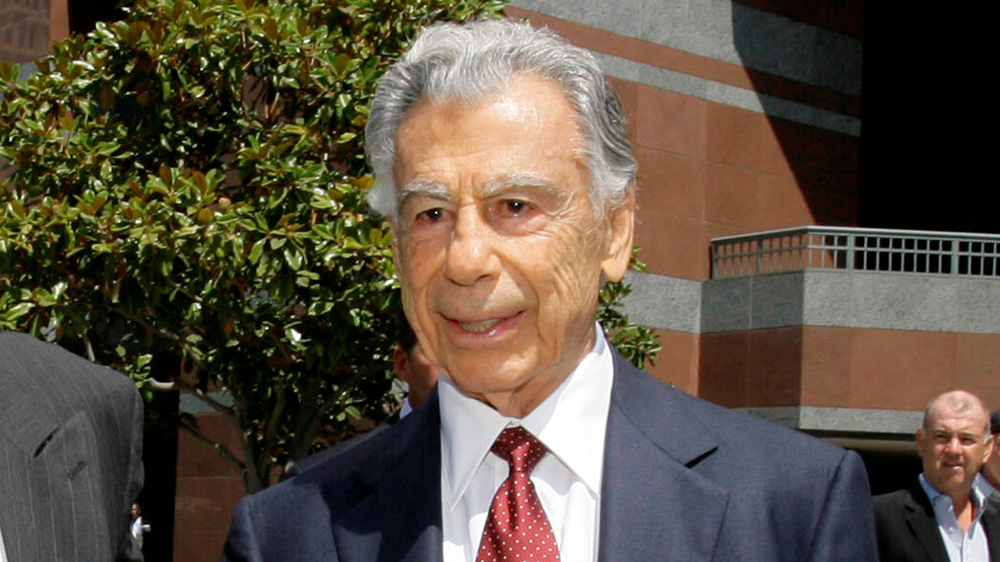Kirk Kerkorian
An American businessman, investor, and philanthropist.. One of the important figures in the shaping of Las Vegas.

Kerkor “Kirk” Kerkorian (June 6, 1917 – June 15, 2015) was an American businessman, investor, and philanthropist. He was the president and CEO of Tracinda Corporation, his private holding company based in Beverly Hills, California. Kerkorian is known for having been one of the important figures in the shaping of Las Vegas and, with architect Martin Stern, Jr. described as the “father of the mega-resort”. He built the world’s largest hotel in Las Vegas three times:[5] the International Hotel (opened in 1969), the MGM Grand Hotel (1973) and the MGM Grand (1993). He purchased the Metro-Goldwyn-Mayer movie studio in 1969.
Of Armenian American origin, Kerkorian provided over $1 billion for charity in Armenia through his Lincy Foundation, which was established in 1989 and particularly focused on helping to rebuild northern Armenia after the 1988 earthquake. Kerkorian also provided money to ensure that a film based on the history of the Armenian Genocide would be made. The resulting film, called “The Promise,” premiered in April 2017 in the United States. In 2000 Time magazine named him the 10th largest donor in the US.] Kerkorian was declared an honorary citizen of Armenia by President Robert Kocharyan in September 1998. He was bestowed the title of National Hero of Armenia, the highest state award, by Kocharyan in May 2004.
Kerkor Kerkorian was born on June 6, 1917 in Fresno, California, to immigrant parents of Armenian origin. Armenian was his first language and he “didn’t learn the English language until he hit the streets.” His family moved to Los Angeles following the depression of 1920–21. Dropping out of school in eighth grade, Kerkorian became a fairly skilled amateur boxer under the tutelage of his older brother Nish Kerkorian, fighting under the name “Rifle Right Kerkorian” to win the Pacific amateur welterweight championship. Kirk Kerkorian also had an older sister, Rose Kerkorian.
In 1962, Kerkorian bought 80 acres (32 ha) in Las Vegas, across the Las Vegas Strip from the Flamingo, for $960,000. This purchase led to the building of Caesars Palace, which rented the land from Kerkorian; the rent and eventual sale of the land to Caesars in 1968 made Kerkorian $9 million.
In 1967, he bought 82 acres (33 ha) of land on Paradise Road in Las Vegas for $5 million and, with architect Martin Stern, Jr., built the International Hotel, which at the time was the largest hotel in the world; The first two performers to appear at the hotel’s enormous Showroom Internationale were Barbra Streisand and Elvis Presley. Presley brought in some 4,200 customers (and potential gamblers), every day, for 30 days straight, breaking in the process all attendance records in the county’s history. Kerkorian’s International Leisure also bought the Flamingo Hotel; eventually both hotels were sold to the Hilton Hotels Corporation and were renamed the Las Vegas Hilton and the Flamingo Hilton, respectively.
After he purchased the Metro-Goldwyn-Mayer movie studio in 1969, Kerkorian (with architect Martin Stern Jr.) opened the original MGM Grand Hotel and Casino, larger than the Empire State Building and the largest hotel in the world at the time it was finished. On November 21, 1980, the original MGM Grand burned in a fire that was one of the worst disasters in Las Vegas history. The Clark County Fire Department reported 84 deaths in the fire; there were 87 deaths total, including three which occurred later as a result of injuries sustained in the fire. After only 8 months the MGM Grand reopened. Almost three months after the MGM fire, the Las Vegas Hilton caught fire, killing eight people.
In 1986, Kerkorian sold the MGM Grand hotels in Las Vegas and Reno for $594 million to Bally Manufacturing. The Las Vegas property was subsequently renamed Bally’s. Spun off from Metro-Goldwyn-Mayer, MGM Resorts International owns and operates several properties, including the Bellagio, the current MGM Grand, The Mirage, the New York-New York, Circus Circus, Mandalay Bay, The Luxor, Excalibur, Monte Carlo and the newly completed CityCenter complex in Las Vegas.
MGM sold its Treasure Island Hotel and Casino property to billionaire and former New Frontier owner Phil Ruffin for $750 million.
In 1969, Kerkorian appointed James Thomas Aubrey, Jr. as president of MGM. Aubrey downsized the struggling MGM and sold off massive amounts of historical memorabilia, including Dorothy’s ruby slippers from the 1939 film The Wizard of Oz, the majority of the studio’s backlots in Culver City and overseas operations such as the British MGM studio at Borehamwood. Kerkorian sold MGM’s distribution system in 1973, and gradually distanced himself from the daily operation of the studio. He also owned minority interest in Columbia Pictures but his holdings were thwarted by the Justice Department who filed an antitrust suit due to his owning stock in two studios. In 1979, Kerkorian issued a statement claiming that MGM was now primarily a hotel company; however, he also managed to expand the overall film library and production system with the purchase of United Artists from Transamerica in 1981, becoming MGM/UA Entertainment Company. In 1986, he sold MGM to Ted Turner. After the purchase was made, Turner sold the United Artists subsidiary back to Kerkorian.
Turner kept ownership of MGM from March 25 to August 26, 1986. He racked up huge debts and Turner simply could not afford to keep the studio under those circumstances. To recoup his investment, Turner sold the production/distribution assets and trademarks of MGM to United Artists, while retaining the pre-May 1986 MGM, Associated Artists Productions (the pre-1950 Warner Bros. library and Fleischer Studios/Famous Studios Popeye cartoons) and RKO Radio Pictures libraries as well as Gilligan’s Island and its animated spin-offs The New Adventures of Gilligan and Gilligan’s Planet. The studio lot was sold to Lorimar-Telepictures, which was later acquired by Warner Bros.; in 1990, the lot was sold to Sony Corporation’s Columbia Pictures Entertainment
Columbia Pictures Entertainment in exchange for the half of Warner’s lot that it had rented since 1972. Also in 1990, the MGM studio was purchased by Italian financier Giancarlo Parretti, who then merged the former Cannon with the MGM purchase to create the short-lived MGM-Pathé Communications. Parretti defaulted on the loans he’d used to buy the studio, leaving the studio in the hands of the French bank, Credit Lyonnais. Credit Lyonnais invested significant sums to revive the moribund studio and eventually sold it back to Kerkorian in 1996. Kerkorian soon expanded the company, purchasing Orion Pictures, The Samuel Goldwyn Company and Motion Picture Corporation of America from John Kluge’s Metromedia in 1997, and bought the pre-1996 PolyGram Filmed Entertainment library in 1999 from its parent Philips, which was in process to sell PolyGram to Seagram.
In 2005, Kerkorian sold MGM once more to a consortium led by Sony. He retained a 55% stake in MGM Mirage.
On November 22, 2006, Kerkorian’s Tracinda investment corporation offered to buy 15 million shares of MGM Mirage to increase his stake in the gambling giant from 56.3% to 61.7%, if approved.
In May 2009, following the completion of a $1 billion stock offering by MGM Mirage, Kerkorian and Tracinda lost their majority ownership of the gaming company, dropping from 53.8 percent to 39 percent and even after pledging to purchase 10 percent of the new stock offering they now remain minority owners.
Kerkorian was an “intensely private person”. He almost never gave interviews and seldom appeared in public. “Kerkorian rarely attended board meetings and never gave speeches. He was shy, but was a tough negotiator. Those who knew him describe him not as a Hughesian hermit, but as a gentle, gracious, normal guy.”
Kerkorian was an avid tennis player, played in tournaments, associated with other players like Lornie Kuhle, and routinely played with Alex Yemenidjian, a former MGM executive, and former owner of the Tropicana Las Vegas resort. He had a penchant for expensive clothes (especially custom-made outfits by Italian designer Brioni), but drove relatively low cost vehicles, such as a Pontiac Firebird, Jeep Grand Cherokee and a Ford Taurus.
Kerkorian died in Beverly Hills, California on June 15, 2015, nine days after his 98th birthday.

Armenia issued a Kirk Kerkorian stamp in 2017. The city of Gyumri unveiled a statue of Kerkorian in 2018.
No tags for this post.




